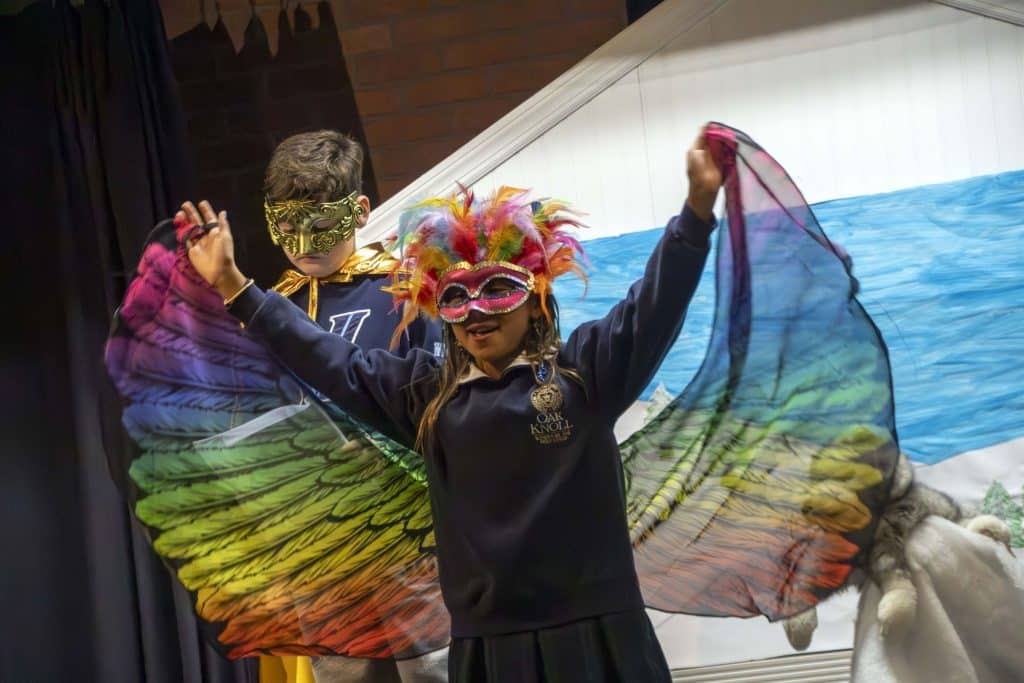Curriculum Spotlight: Grade 4 Social Studies
 Grade 4 Social Studies students took to the Lower School Drama Studio Stage this year to entertain their peers and parents with a short play adaptation of the book The Rainbow Crow. The students used dialogue, puppets, and colorful props to relate a Native American fable about a crow that damages its beautiful multi-colored feathers and gentle voice while on a journey to save other creatures from possible extinction.
Grade 4 Social Studies students took to the Lower School Drama Studio Stage this year to entertain their peers and parents with a short play adaptation of the book The Rainbow Crow. The students used dialogue, puppets, and colorful props to relate a Native American fable about a crow that damages its beautiful multi-colored feathers and gentle voice while on a journey to save other creatures from possible extinction.The fable offers an entertaining explanation for the black feathers and raspy sound of a crow. Beyond that, it provides a metaphor for self-sacrifice and the interconnection between species. The play is one project in a series of units introducing grade 4 students to the history of indigenous people in America. They have also studied native american crafts, cooking, dwellings, customs, and more.
Grade 4 is a turning point for students in the overall Lower School Social Studies Curriculum. Up to this point, they have been gradually expanding their sense of belonging, pride, and place as residents of the United States.
In the early years (pre-K and kindergarten), social studies introduced them to the basic aspects of cultural diversity. They expanded their perspective as they explored their immediate community and progressed to the global community.
In the primary years (grades 1 and 2), they began to see themselves as citizens of the United States. They learned about fundamental rights and responsibilities while learning to analyze data by reading maps, graphs, charts, and primary sources.
By grade 3, students are ready for a deeper exploration of the US, and they begin a four-year program of American Studies that culminates in grade 6. The first two years introduce them to why natural, human, and capital resources are all important to our country. Citizenship values are developed through the study of American holidays and increased awareness of the role of the citizen in the American government. They expand their understanding of place by learning map skills and the names of American states and capitals. They learn about local, state, and national levels of government.
At the end of grade 4, they developed a strong sense of place as American residents and a good understanding of milestones and heroes in American history, including indigenous peoples. In grades 5 and 6, they are now ready to take this foundation and begin delving into more complicated issues relating to American history, such as colonization, the Revolutionary War, and slavery.
“I think we first need to instill a sense of pride in our country in our students by grade 4,” said Kathleen Hoke, Grade 3 and 4 Social Studies Teacher. “Then, as they get older, in grades 5 and 6, they can learn about what their country still needs to work on. But as a young person, you need to have that pride first, and then, once you have that pride, you can go on and question aspects of equality in America. Social studies are essential in Lower School to impart an understanding of America’s history. Once students get that base, they can build on that in more sophisticated ways to compare and contrast our society and values internally and with other countries and cultures.”





